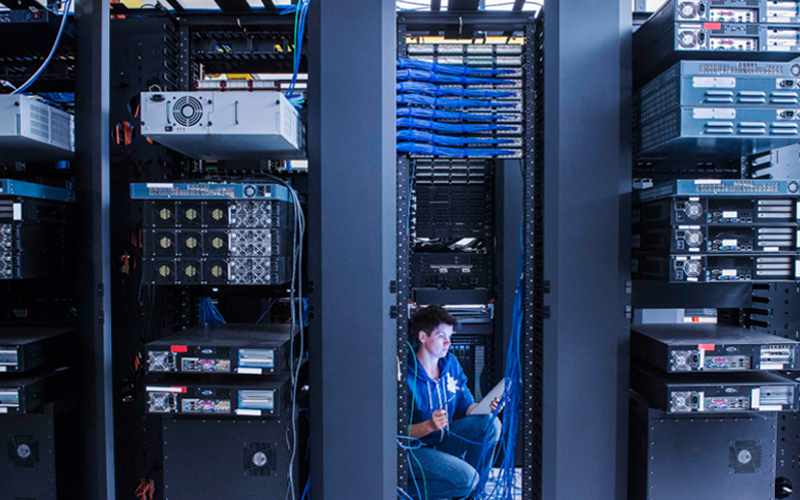AI is among the most pathbreaking technologies of the millennium. Powered by 5G’s low latency and high-speed connectivity, AI can transform business models, enable large-scale automation, optimise operations, spawn innovation, and drive significant revenue growth.
AI in telecom can be a game-changer. After a decade of setbacks, slowdowns, and cannibalisation by OTTs, the telecommunications industry can finally bounce back by leveraging the transformative power of artificial intelligence.
Studies estimate that the market value of AI in telecom will be $19.17 billion by 2029, rising at a CAGR of 40.6% in the next six years. While a digital transformation is imperative in addressing the key challenges of growing traffic and network inefficiency, does AI adoption also spell innovation, value expansion, and revenue assurance for telecoms?
Let us explore ways in which leading telecommunication carriers are leveraging AI to stay competitive and improve their bottom lines.
How AI drives telecom revenue assurance
The value of AI solutions for telecom lies in their ability to identify inefficiencies that may cause revenue leakage, develop innovative products and services and generate new revenue streams, and enable partnerships and collaborations to benefit from a shared economy.
Below are the key ways telecoms can benefit from AI:
- Network optimisation
- Robotic Process Automation (RPA)
- Customer service
- Predictive analytics
- Fraud detection
- Data monetisation
- IoT monetisation
- Enhanced connectivity services
- Low-power Wide Area Network (LPWAN) for businesses
- Location tracking services
- Data Analytics as a Service (DAaaS)
- Vertical solutions for industries such as healthcare, retail, entertainment, logistics, and more
- Opportunities for partnerships and joint ventures
As communication networks become increasingly complex and expansive, telecoms struggle to maintain their performance levels, maximise capacity, and lower energy consumption. With cloud-based AI solutions, telecoms can expand networks to their maximum capacities and scale without compromising on performance.
AI can identify bottlenecks, prevent outages and downtime, minimise interruptions, and resolve issues ahead of consumer impact. This improves service quality and reduces churn.
RPA is an AI-driven technology that deploys robots to automate rules-based tasks. RPA has multiple use cases in the telecom industry, such as updating databases, enabling customer self-service, billing and order fulfilment, and monitoring servers and networks.
By deploying RPA for back-office operations and labour-intensive tasks, telecoms can free human teams for value-added work, driving significant time- and cost-savings.
Most industries use AI chatbots, IVR systems, and virtual assistants to handle customer service. Telecoms are no exception. Besides handling customer queries in real time and providing 24/7 support, AI can analyse consumer behaviour and preferences and help create highly personalised user experiences .
Additionally, ML algorithms can teach bots to cross-sell, upsell, and guide customers to relevant products and services. Using AI in telecom customer service translates to an enhanced customer experience, lower service costs, and revenue generation through effective product recommendations.
The predictive capabilities of AI can ensure revenue assurance in telecoms in several ways.
With AI-driven predictive maintenance models, telecoms can monitor equipment performance and anticipate malfunctions based on historical data. This helps providers identify and proactively resolve hardware issues that may cause extended downtime.
In the long term, telecoms can use predictive analytics to forecast future demand and market trends to improve resource allocation and strategic goal-setting.
Fraud is among the biggest causes of telecom revenue erosion. A 2021 study found that telecoms had lost 2.22% of their total revenue, or $39.89 billion, to fraud in that year.
Not surprisingly, leading telecom carriers are leveraging AI’s superior capabilities to fight fraud and plug revenue leakage. AI/ML algorithms can detect suspicious activity in real time, mitigating the risk of scams, data breaches, fake profiles, and unauthorised access.
With the volumes of data generated through mobile devices, networks, customer profiles, billing information, geolocation facilities, and myriad other touchpoints, telecoms are sitting on a goldmine. AI in telecom can unify and analyse this data, making it available for product innovation and targeted marketing.
Additionally, telecoms can sell syndicated data and data-driven insights to other businesses, creating fresh revenue streams. Capitalising on data can also open the doors to strategic partnerships and collaborations.
The synergy of IoT and AI in telecom holds immense potential for the telecommunications industry. By embracing IoT, telecoms can make the best use of AI’s potential for sustained growth and long-term gains. IoT monetisation with AI includes -
Implementing AI for telecom revenue assurance
Optimising operations with AI requires meticulous planning and execution. Below are four critical steps to successfully implementing AI in telecom companies:
High-quality data is crucial in training AI/ML models. Use clean data from multiple sources to optimise your AI solutions’ capabilities.
Define the issues that need AI intervention. You may need AI for network optimisation, predictive maintenance, customer support, or data security. The solution varies according to the problem.
AI solutions need a robust infrastructure with supporting technologies such as edge computing, cloud computing, and machine learning platforms. Ensure that the infrastructure and platform architecture align with your needs.
Digital solutions are only as smart as the humans who manage them. Get buy-in from stakeholders, build an expert team of data scientists, engineers, and analysts, and invest in regular training and upskilling.
For organisations on the digital transformation journey, agility is key in responding to a rapidly changing technology and business landscape. Now more than ever, it is crucial to deliver and exceed organisational expectations with a robust digital mindset backed by innovation. Enabling businesses to sense, learn, respond, and evolve like living organisms will be imperative for business excellence. A comprehensive yet modular suite of services is doing precisely that. Equipping organisations with intuitive decision-making automatically at scale, actionable insights based on real-time solutions, anytime/anywhere experience, and in-depth data visibility across functions leading to hyper-productivity, Live Enterprise is building connected organisations that are innovating collaboratively for the future.
How can Infosys BPM help?
Infosys BPM helps CSPs identify and eliminate revenue leakage with cutting-edge technologies, revenue assurance analytics, and a professional team of data scientists, analysts, and visualisation experts.
Know how Infosys BPM’s revenue assurance in telecom industry can help you take your business to the next level.






